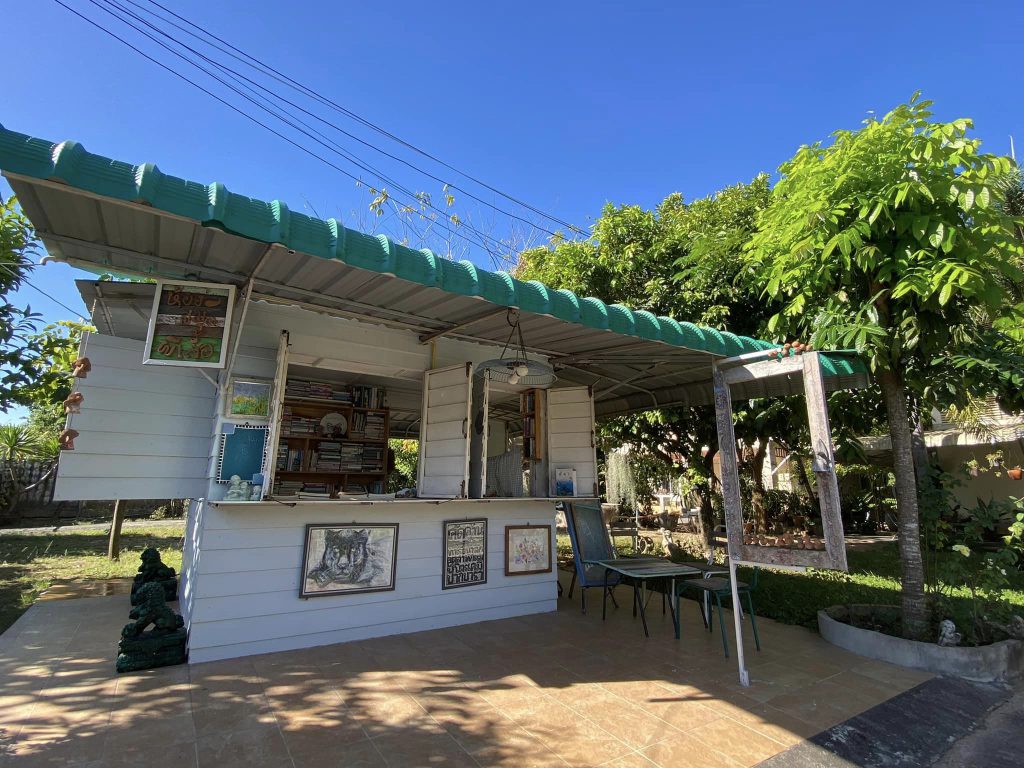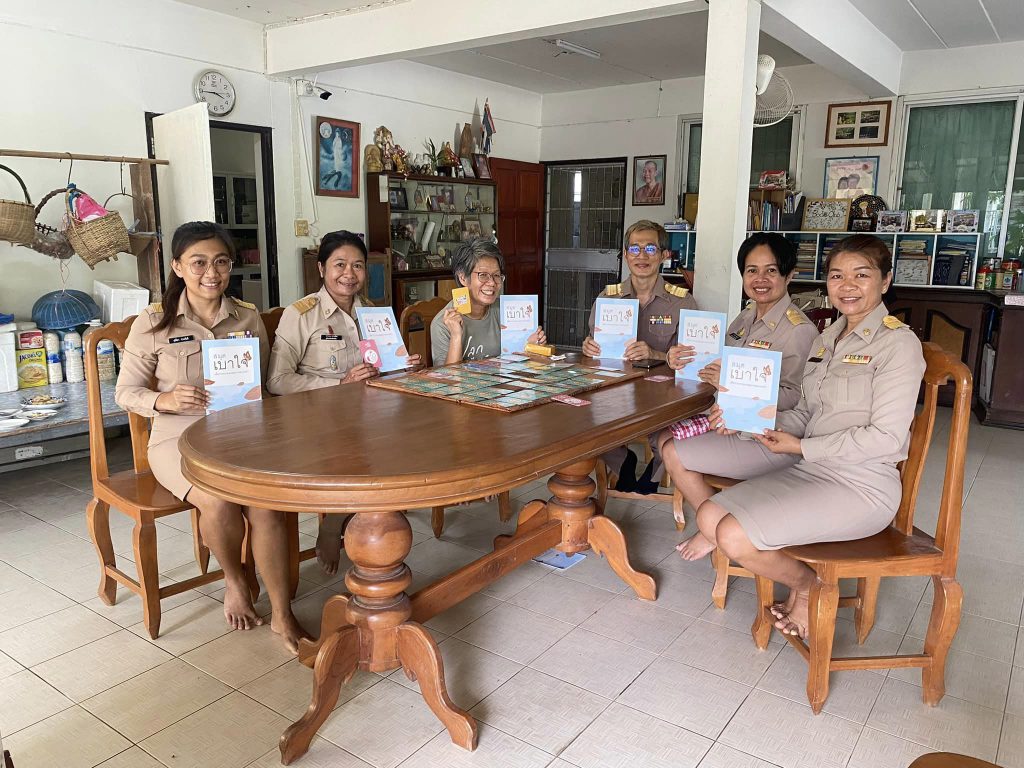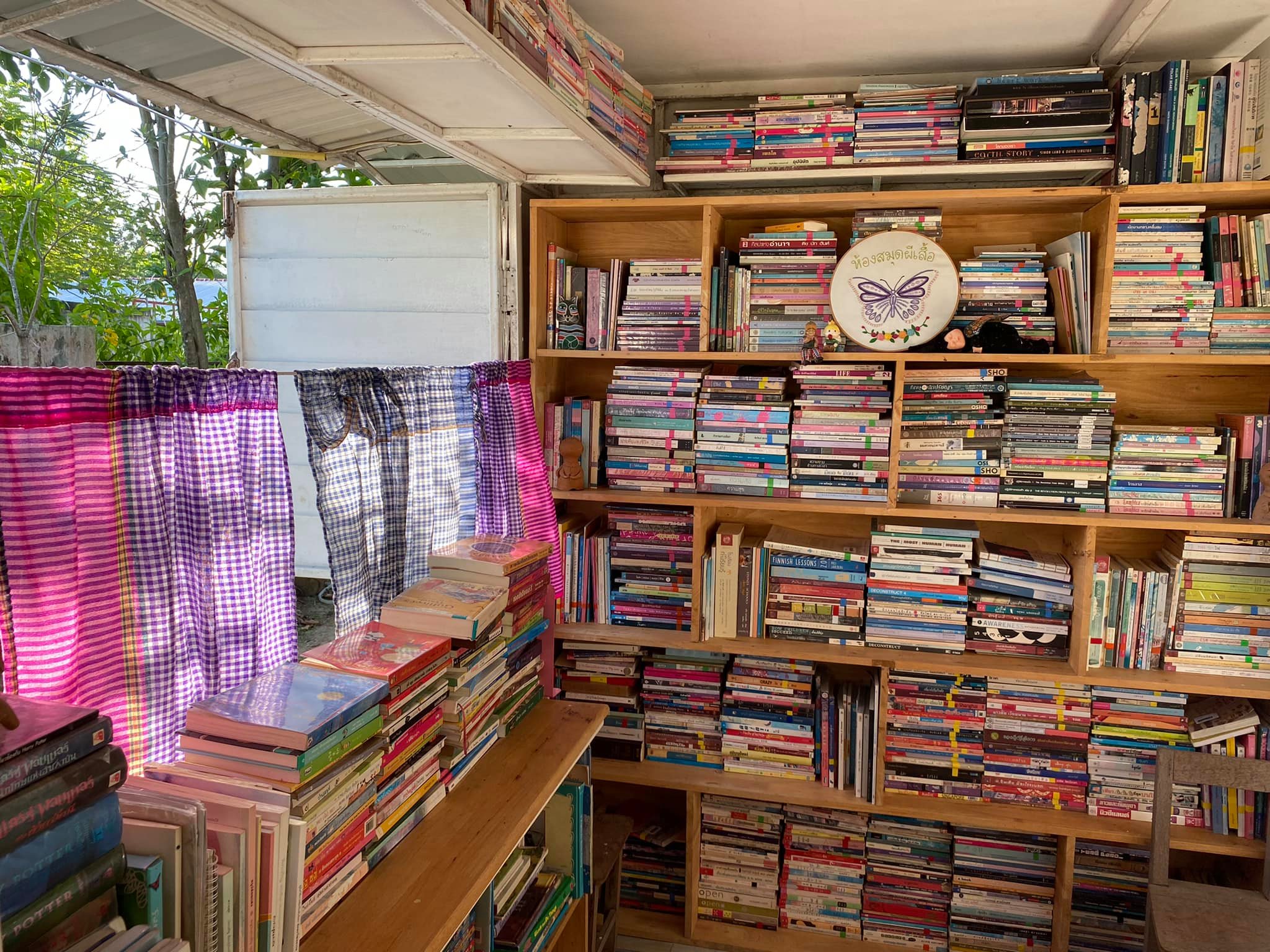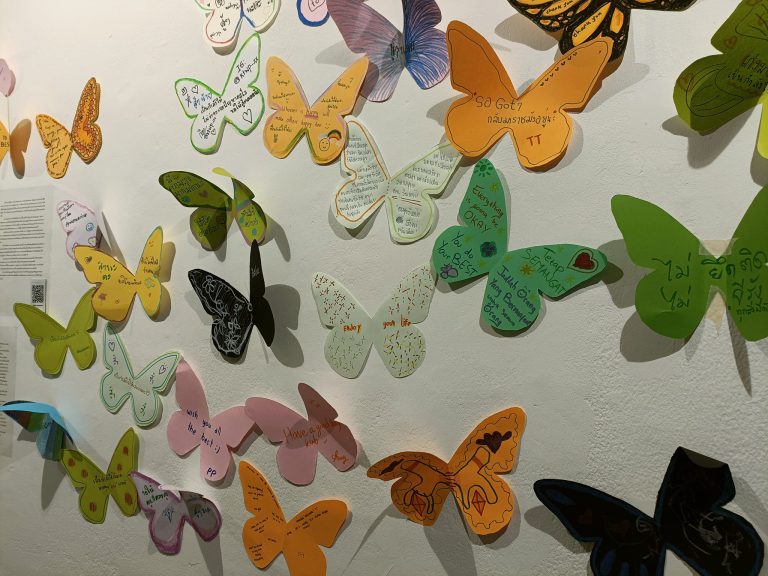“The Butterfly Library” is a public space dedicated to learning and open to anyone interested, free of charge. This library is located in the province of Sisaket and was born from the idea of Khun Orr, Hathairat Suda, an independent scholar and former NGO officer who decided to return to her hometown after 30 years. Khun Orr has been striving to establish a connection between her hometown and herself and wanted to contribute to society by creating activity that utilizing her abilities and interests. With a strong passion for reading, personally owning lots of books, and recognizing the benefits that reading can bring, including fostering imagination, expanding thoughts, and promoting child development, she made the decision to create the Butterfly Library. She transformed a portion of her own home into a library using her personal funds, and also purchased additional books for children to encourage children in the local community and neighboring villages to read and borrow the books, play games, or join other activities. Besides, there are training sessions on active learning methodologies or gender and sexuality education for teachers, healthcare professionals, and other interested individuals.


In addition to providing library services and training on learning process, the Butterfly Library also serves as a safe space for conversations, storytelling, and counseling related to inner well-being, using counseling principles, coupled with cards to facilitate discussions. The initial connection between the Butterfly Library and the compassionate community started from Khun Orr worked as a facilitator in a central prison in Khon Kaen. There, she had an opportunity to listen to discussion related to some people facing death. This made her interest in providing training related to death for others and drew her to the concept of peaceful death, which she had personal experiences from working as a volunteer taking care of AIDS patients. She practiced care-taking and guiding individuals through the process of dying peacefully. Khun Orr did this activity constantly but not quite in a systematic approach. Consequently, she attended additional training related to facing death from an “I see you” group and eventually get to know Peaceful Death group. Applying the tools from Peaceful Death and concepts gained from training, learning, and personal experiences, she designed facing peaceful death curriculum called “Living Well, Dying Well.” This curriculum consists of two courses: one targeting the elderly, focusing on contemplating one’s own life, and the other course target caregivers and healthcare professionals involved in end-of-life care in the community, which participants acquire skills in caring for and preparing the elderly and terminally ill patients. The course is one day long for the elderly-focused curriculum and two days for the caregiver curriculum. The first day emphasizes the meaning of living well and dying well, utilizing tools such as the “Cards of Life” and a “Baojai book”, a journal to facilitate introspection and letting go matters in life. The second day of the caregiver curriculum involves training in three key skills: 1) understanding the emotions of the elderly, who often feel worthless and burdensome; 2) practicing observation, questioning, and attentive listening to truly understand the genuine needs of the elderly and avoid providing assistance that might intrude upon their capabilities; and 3) coaching skills to empower caregivers to become coaches, enabling the elderly to care for themselves.

One reason for the development of the facing death training program is to address the issues faced by caregivers and care managers who may not focus on mind preparation and acceptance of physical deterioration, particularly death, which is natural. It is partly driven by physical aspects or “living well” are often prioritized over emotional well-being or “dying well” in most of the care plan of terminally ill patients. So, we see more efforts in reducing pain of patients or prolonging life, rather than letting go. In reality, both physical and emotional aspects should go hand in hand. Khun Orr recognized this importance and has capacity about the process of preparing for death. So she organized the training program to fill the gap caused by this deficiency. It is recommended to start with basic training in providing emotional care for terminally ill patients, beginning with the family members. The training is divided into two phases. In the first phase, when the patient is still conscious, emphasis should be placed on communication and listening, seeking to understand what they need, and avoiding presumptions, thinking on behalf of the patients. In the second phase, when the patient is no longer conscious, caregivers should prepare themselves mentally to stay calm and use physical touch instead of verbal communication. Because touch can convey deeper feelings than words. The patients will feel the hugs and companions along the journey. Khun Orr compared the caregiver’s preparation phase by using tools from Peaceful Death (which one require to remain calm and be ready to listen to those individuals in the present moment) that seem to be similar to counseling principles, allowing the connection of emotions between the opposite parties.


In creating a library, including various activities, Khun Orr ultimately determine that this place will serve as an inspiring source for people to learn through observation, not just through guiding words. It emphasizes that sharing does not necessarily have to involve monetary transactions, but rather, we can share what we have, such as knowledge, abilities, or safe spaces, for people to come together and exchange knowledge and stories between each others.
Lastly, for those who wish to return to their hometown and give back to society, Khun Orr has some suggestion to start with preparing one’s mind to be ready and learning to be still. Then, taking care of and building good relationships with family members to be happy. By viewing others as humanity, offering compassion to yourself and loved ones, and then sharing happiness with others through your skills, your knowledge, and things that you loved. These will be beneficial to others while also bringing joy to ourselves. If you are interested in the Butterfly Library, you can find additional information on the Facebook page of the Butterfly Library.
Release Date: April 25, 2021
Author: Surapin Yusawang
Picture Reference: Facebook page of the Butterfly Library



